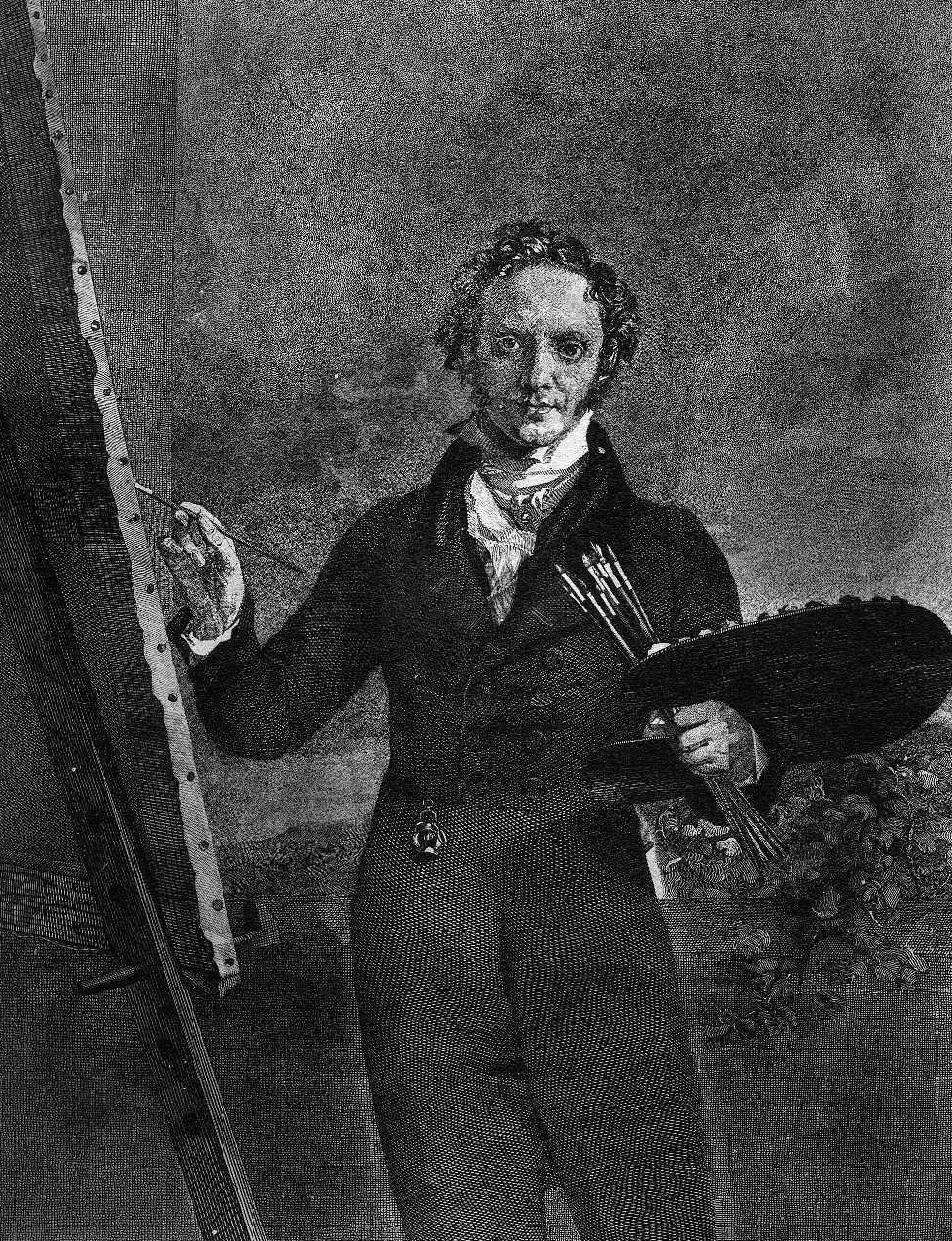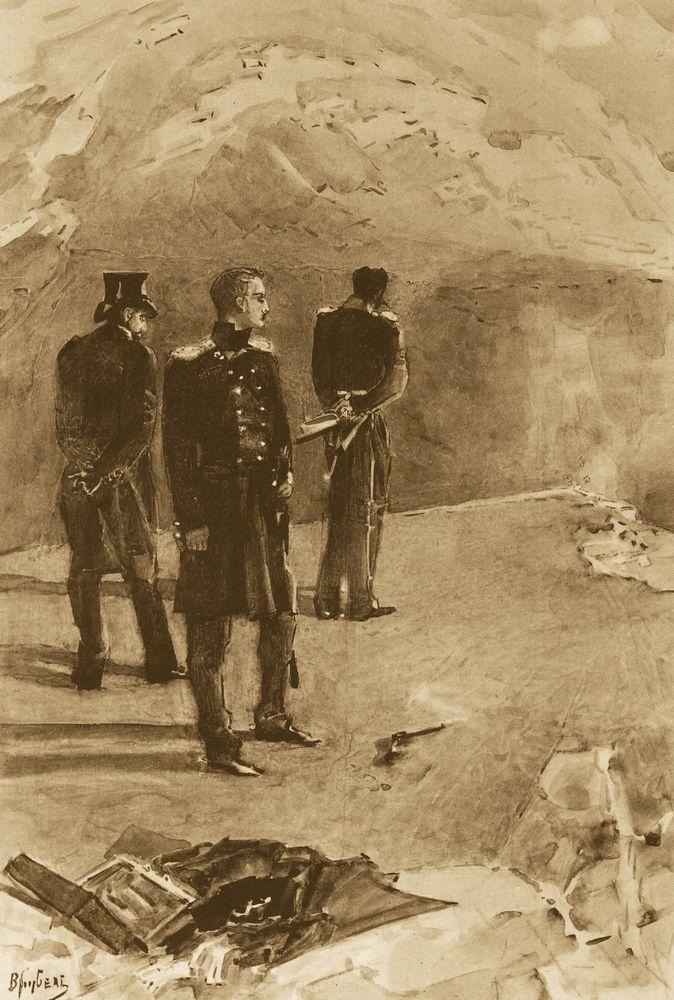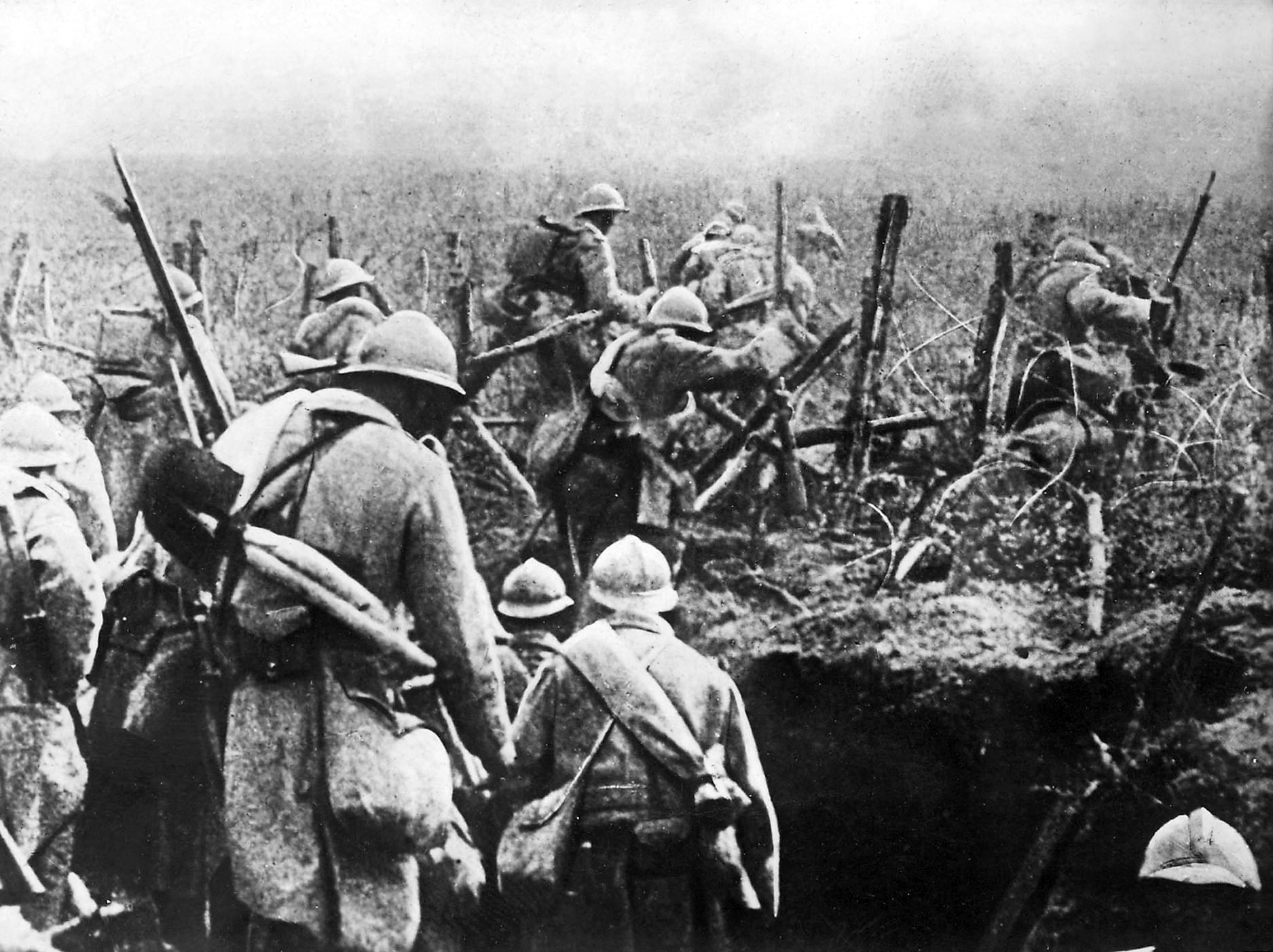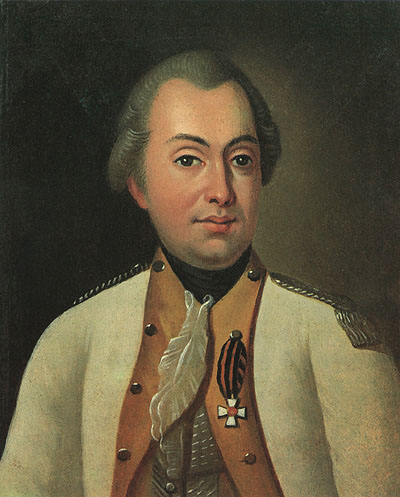|
Denis Davydov (other)
Denis Vasilyevich Davydov (, ; – ) was a Russian soldier-poet of the Napoleonic Wars who invented the genre of hussar poetry, characterised by hedonism and bravado. He used events from his own life to illustrate such poetry. He suggested and successfully pioneered guerrilla warfare in the Patriotic War of 1812 against Napoleon. Biography Davydov stemmed from a family of Russian nobility with, as he claimed, Tatar roots. After gaining celebrity as a guerrilla leader in the French invasion of Russia he became one of the most popular men in the country. Young men of Alexander Pushkin's circle viewed him as a model romantic hero and the Decembrists prized his company as well. He was high-spirited, healthy, virile, unromantic, and shallow. He was a great wit and fond of fun, in life as well as in literature. His early and most popular verses are in a style of his own making, known as the "hussar style." In them he sings the praise of reckless valor, on the field of battle as well ... [...More Info...] [...Related Items...] OR: [Wikipedia] [Google] [Baidu] |
George Dawe
George Dawe (6 February 1781 – 15 October 1829) was an English portraitist who painted 329 portraits of Russian generals active during Napoleon's invasion of Russia for the Military Gallery of the Winter Palace. He relocated to Saint Petersburg in 1819, where he won acclaim for his work from the artistic establishment and complimentary verses by Pushkin. He was the son of Philip Dawe, a successful mezzotint engraver who also produced political cartoons relating to the events of the Boston Tea Party. One of his brothers was Henry Edward Dawe, also a portraitist. He died on 15 October 1829 in Kentish Town, United Kingdom. Life and career Early life and studies George Dawe was born on 6 February 1781 to Philip Dawe and Jane in Brewer Street, in the parish of St James's in Westminster. Philip was an artist and engraver in mezzotint who had worked with Hogarth and Joseph Mallord William Turner and who also produced satirical political cartoons about life in America w ... [...More Info...] [...Related Items...] OR: [Wikipedia] [Google] [Baidu] |
Romantic Hero
The Romantic hero is a literary archetype referring to a character that rejects established norms and conventions, has been rejected by society, and has themselves at the center of their own existence. The Romantic hero is often the protagonist in a literary work, and the primary focus is on the character's thoughts rather than their actions. Characteristics Literary critic Northrop Frye noted that the Romantic hero is often "placed outside the structure of civilization and therefore represents the force of physical nature, amoral or ruthless, yet with a sense of power, and often leadership, that society has impoverished itself by rejecting". Other characteristics of the Romantic hero include introspection, the triumph of the individual over the "restraints of theological and social conventions", wanderlust, melancholy, misanthropy, alienation, and isolation. However, another common trait of the Romantic hero is regret for their actions, and self-criticism, often leading to phi ... [...More Info...] [...Related Items...] OR: [Wikipedia] [Google] [Baidu] |
Flag Carrier
A flag carrier is a transport company, such as an airline or shipping company, that, being locally registered in a given sovereign state, enjoys preferential rights or privileges accorded by that government for international operations. Historically, the term was used to refer to List of government-owned airlines, airlines owned by the government of their home country and associated with the national identity of that country. Such an airline may also be known as a national airline or a national carrier, although this can have different legal meanings in some countries. Today, it is any international airline with a strong connection to its home country or that represents its home country internationally, regardless of whether it is government-owned. Flag carriers may also be known as such due to laws requiring aircraft or ships to display the state flag of the country of their Flag state, registry. For example, under the law of the United States, a U.S. flag air carrier is any ... [...More Info...] [...Related Items...] OR: [Wikipedia] [Google] [Baidu] |
Boeing 777-300ER
The Boeing 777, commonly referred to as the Triple Seven, is an American long haul, long-range Wide-body aircraft, wide-body airliner developed and manufactured by Boeing Commercial Airplanes. The 777 is the world's largest twinjet and the most-built wide-body airliner. The Jet airliner, jetliner was designed to bridge the gap between Boeing's other wide body airplanes, the twin-engined Boeing 767, 767 and quad-engined Boeing 747, 747, and to replace aging DC-10 and L-1011 trijets. Developed in consultation with eight major airlines, the 777 program was launched in October 1990, with an order from United Airlines. The B-HNL, prototype aircraft rolled out in April 1994, and first flew that June. The 777 entered service with the launch operator United Airlines in June 1995. Longer-range variants were launched in 2000, and first delivered in 2004. The Triple Seven can accommodate a ten–abreast seating layout and has a typical 3-class capacity of 301 to 368 passengers, with a ... [...More Info...] [...Related Items...] OR: [Wikipedia] [Google] [Baidu] |
Aeroflot Boeing 777-300ER D
PJSC AeroflotRussian Airlines (, ), commonly known as Aeroflot ( or ; , , ), is the flag carrier and the largest airline of Russia. Aeroflot is headquartered in the Central Administrative Okrug, Moscow, with its hub being Sheremetyevo International Airport. The Federal Agency for State Property Management, an agency of the Government of Russia, owns 73.77% of the company, with the rest of the shares being public float. During the time of the Soviet Union, Aeroflot was one of the largest airlines in the world. In 1992, following the dissolution of the Soviet Union, Aeroflot was divided into approximately 400 regional airlines informally known as Babyflots and was restructured into an open joint-stock company. It has a market share in Russia of approximately 42.3%. Including subsidiaries, the company carried 55.3 million passengers in 2024. Aeroflot also owns Rossiya Airlines and Pobeda, a low-cost carrier. The Aeroflot fleet, excluding subsidiaries, includes 171 airplanes: 112 ... [...More Info...] [...Related Items...] OR: [Wikipedia] [Google] [Baidu] |
Attrition Warfare
Attrition warfare is a form of military strategy in which one side attempts to gradually wear down its opponent to the point of collapse by inflicting continuous losses in personnel, materiel, and morale. The term ''attrition'' is derived from the Latin word , meaning "to wear down" or "to rub against", reflecting the grinding nature of the strategy. Strategic considerations Attrition warfare seeks to erode an opponent’s capacity to wage war by systematically destroying their military resources, morale, and logistics over time. This may involve guerrilla warfare, people's war, scorched earth tactics, or prolonged engagements short of a decisive battle. It contrasts with strategies such as blitzkrieg or force concentration, which aim to achieve rapid victory through overwhelming power in a single decisive engagement. As Clausewitz described, it is a strategy of exhausting the adversary’s will and capability to fight. A combatant facing a significant disadvantage may ... [...More Info...] [...Related Items...] OR: [Wikipedia] [Google] [Baidu] |
Attrition Warfare Against Napoleon
Attrition warfare represents an attempt to grind down an opponent's ability to make war by destroying their military resources by any means possible, including scorched earth, people's war, guerrilla warfare and all kind of battles apart from a decisive battle. Elements of this kind of warfare had already been used in the Peninsular war. The Russian attrition warfare against Napoleon began on 24 June 1812 when Napoleon's crossed the Neman River into Russia and ended on 14 December 1812 with the total defeat of the . A visual representation is given by the drawing of Charles Joseph Minard. The Trachenberg Plan was used in the Sixth Coalition in Germany 1813 and in France 1814. The Seventh Coalition defeated him at Waterloo in 1815 and exiled him to Saint Helena, where he died six years later. Scorched earth policy Portugal The Peninsular War had started in Portugal with the Invasion of Portugal (1807) and went on until 1814. In September 1810 Masséna made the third French attem ... [...More Info...] [...Related Items...] OR: [Wikipedia] [Google] [Baidu] |
Mikhail Kutuzov
Prince Mikhail Illarionovich Golenishchev-Kutuzov-Smolensky (; – ) was a Field Marshal of the Russian Empire. He served as a military officer and a diplomat under the reign of three Romanov monarchs: Empress Catherine II, and Emperors Paul I and Alexander I. Kutuzov was shot in the head twice while fighting the Turks (1774 and 1788) and survived the serious injuries seemingly against all odds. He defeated Napoleon as commander-in-chief using attrition warfare in the Patriotic war of 1812. Alexander I, the incumbent Tsar during Napoleon's invasion, would write that he would be remembered amongst Europe's most famous commanders and that Russia would never forget his worthiness. Early career Youth Mikhail Kutuzov was born in Saint Petersburg on 16 September 1745. His father, Lieutenant-General (1717–1784), had served for 30 years with the Corps of Engineers, had seen action against the Turks and served under Peter the Great. His mother was Anna Illarionovna Beklemishe ... [...More Info...] [...Related Items...] OR: [Wikipedia] [Google] [Baidu] |
Grande Armée
The (; ) was the primary field army of the French Imperial Army (1804–1815), French Imperial Army during the Napoleonic Wars. Commanded by Napoleon, from 1804 to 1808 it won a series of military victories that allowed the First French Empire to exercise unprecedented control over most of Europe. Widely acknowledged to be one of the greatest fighting forces ever assembled, it suffered catastrophic losses during the disastrous French invasion of Russia, after which it never recovered its strategic superiority and ended its military career with a total defeat during the Hundred Days in 1815. The ''Grande Armée'' was formed in 1804 from the Army of the Coasts of the Ocean (1804), Army of the Coasts of the Ocean, a field army of over 100,000 men assembled for Napoleon's planned invasion of the United Kingdom. He subsequently led the field army to Central Europe and defeated Austrian Empire, Austrian and Russian Empire, Russian forces as part of the War of the Third Coalition. T ... [...More Info...] [...Related Items...] OR: [Wikipedia] [Google] [Baidu] |
Pyotr Bagration
Prince Pyotr Ivanovich Bagration (10 July 1765 – 24 September 1812) was a Russian general and prince of Georgians, Georgian origin, prominent during the French Revolutionary and Napoleonic Wars. Bagration, a member of the Bagrationi dynasty, was born in Kizlyar.Pluchart (1835), pp. 60–61 His father, Ivan Aleksandrovich Bagration, Ivan (Ivane), served as an officer in the Imperial Russian Army, in which Bagration also enlisted in 1782. Pyotr Ivanovich Bagration began his military career serving in the Russo-Circassian War of 1763–1864 for a couple of years. Afterwards he participated in a war against the Ottomans and the capture of Siege of Ochakov (1788), Ochakov in 1788. Later he helped suppress the Kościuszko Uprising of 1794 in Poland and capture Warsaw. During Russia's Italian and Swiss expedition, Italian and Swiss campaigns of 1799 against the French, he served with distinction under Field Marshal Alexander Suvorov. In 1805 Russia joined the coalition against Napo ... [...More Info...] [...Related Items...] OR: [Wikipedia] [Google] [Baidu] |
Novodevichy Convent
Novodevichy Convent, also known as Bogoroditse-Smolensky Monastery (), is probably the best-known cloister of Moscow. Its name, sometimes translated as the ''New Maidens' Monastery'', was devised to differ from the Ascension Convent, Old Maidens' Monastery within the Moscow Kremlin.The convent was founded by Grand Duke Vasili III of Russia, Vasily III on May 13 , 1524 in honor of the Smolensk Icon of the Mother of God " Hodegetria " - the main shrine of Smolensk , in gratitude for the capture of Smolensk in 1514. Unlike other Moscow cloisters, it has remained virtually intact since the 17th century. In 2004, it was proclaimed a UNESCO World Heritage Site. Structure and monuments The Convent is situated in the south-western part of the historic town of Moscow. The Convent territory is enclosed within walls and surrounded by a park, which forms the buffer zone. The park is limited by the urban fabric of the city on the north and east sides. On the west side, it is limited by the ... [...More Info...] [...Related Items...] OR: [Wikipedia] [Google] [Baidu] |
Katholikon
A ''katholikon'' or catholicon () or ''sobor'' () refers to one of three things in the Eastern Orthodox Church: * The cathedral of a diocese. * The major Church (building), church building (temple) of a monastery corresponding to a conventual church in Western Christianity. * A large church in a city at which all the faithful of the city gather to celebrate certain important feasts rather than go to their local parish church. The name derives from the fact that it is (usually) the largest church where all gather together to celebrate the major feast days of the liturgical year. In Russia, it is common for a katholikon to have a smaller church in the basement which can be more easily heated in the winter. A ''katholikon'' may have special architectural features in it, such as a ''kathedra'' (episcopal throne), or both an ''esonarthex'' (inner-narthex) and ''exonarthex'' (outer narthex), used for special services such as the Paschal vigil or a Lity (Orthodox Vespers), lity. The ... [...More Info...] [...Related Items...] OR: [Wikipedia] [Google] [Baidu] |












